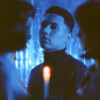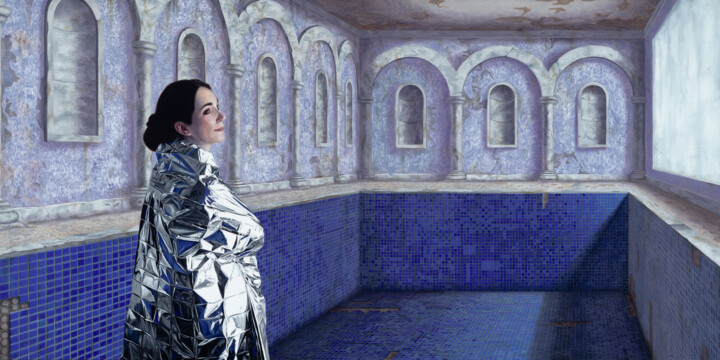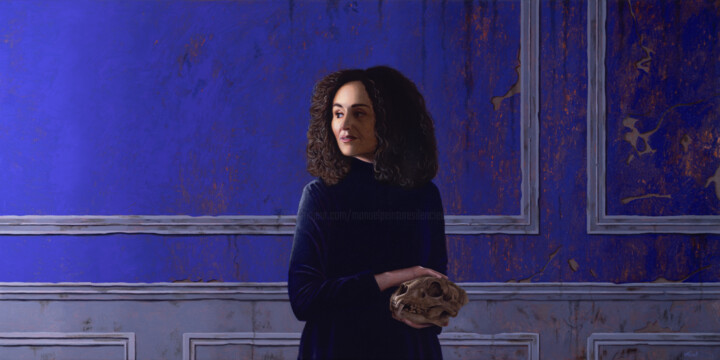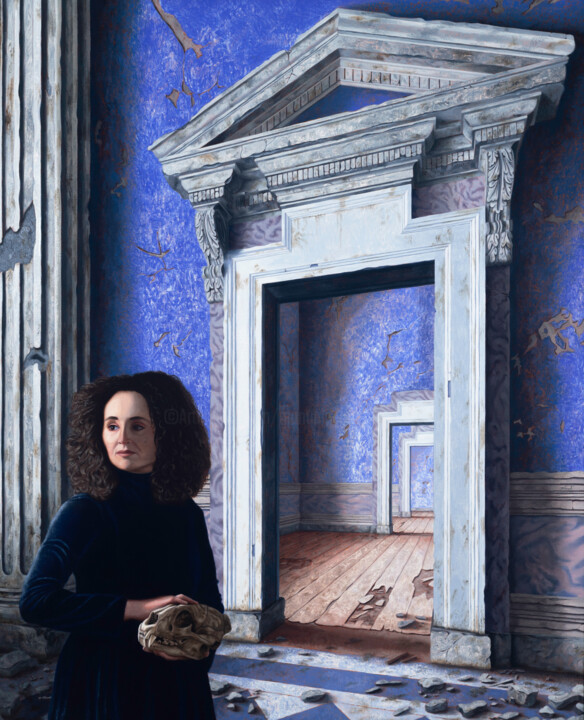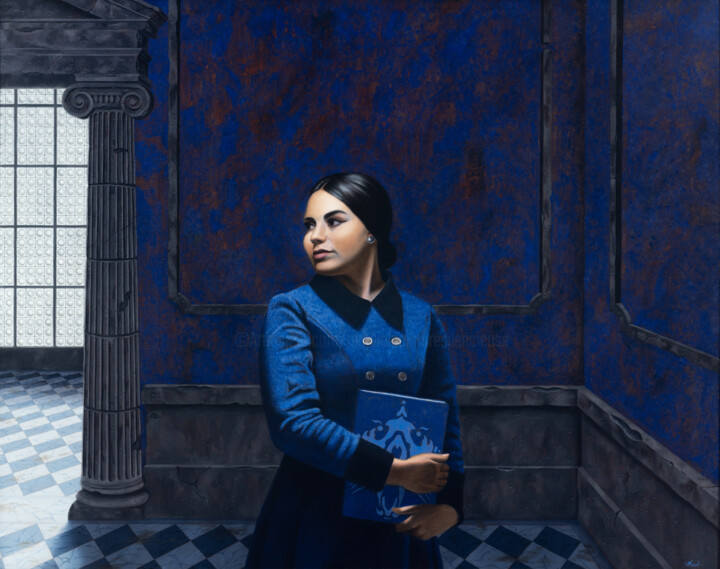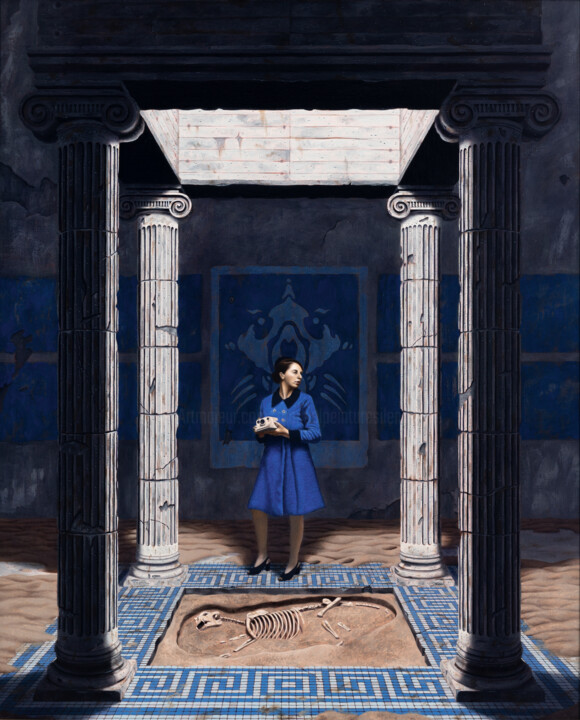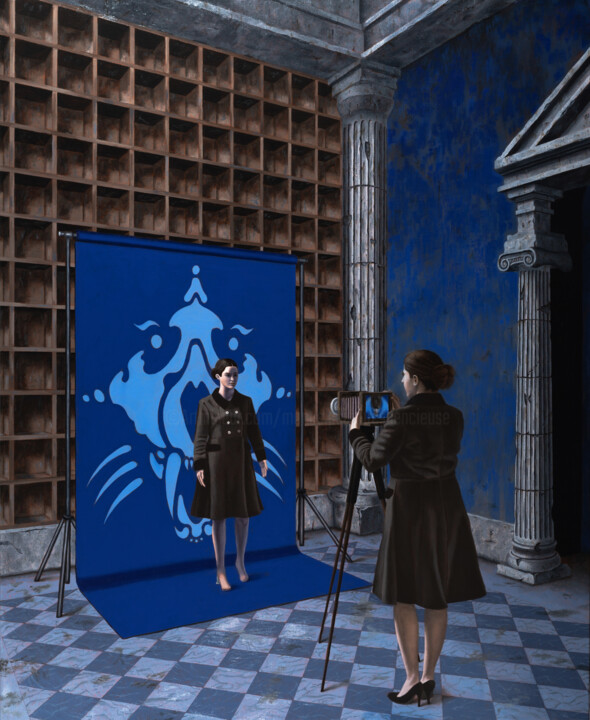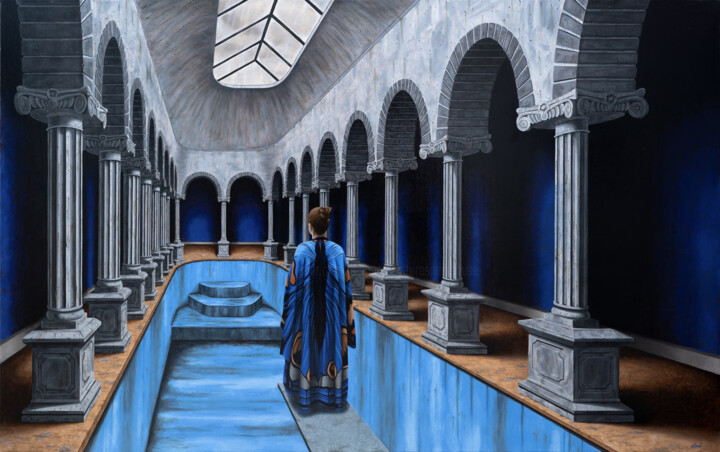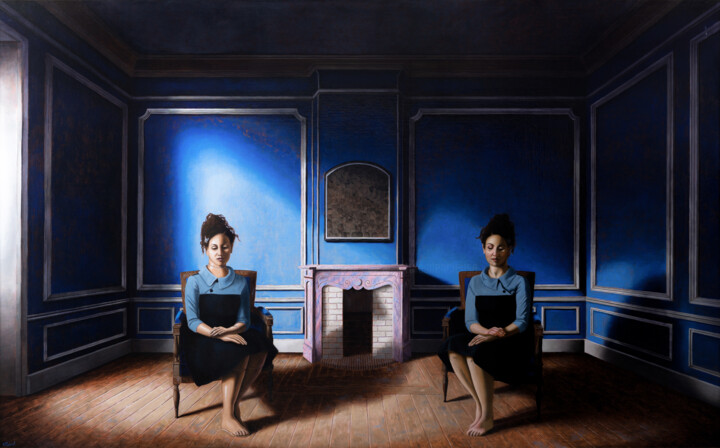What inspired you to create works of art and to become an artist? (events, feelings, experiences...)
My personal artistic production begins around the age of five. My first major artistic influence was the discovery around the age of fourteen, of the cinema of the new Hollywood. Watching these films was a significant aesthetic shock because their work was thematically complex, formally innovative, morally ambiguous, and rich in mythical resonance. The new Hollywood has seen the birth of some of the greatest directors and greatest works in the history of cinema where immorality and extreme violence, previously censored by the Hays code, are intertwined in twilight and desperate stories. Ambiguity, the realistic view of individuals and their problems, the willingness to explore the depths of the human soul, and the use of antiheroes are themes that stand out in my pictorial work.
What is your artistic background, the techniques and subjects you have experimented with so far?
I was more of a draftsman than a painter at first, then I experimented with acrylic paint, which I didn't appreciate (Fast drying, lack of nuance, etc.). I discovered oil painting and its secrets in 2010, I was immediately convinced that this technique would serve my purpose. I also really appreciate the dry pastel which also allows me to translate the cold atmospheres that I like.
What are the 3 aspects that differentiate you from other artists, making your work unique?
- The desire not to produce a fashionable work but a timeless work.
- I propose a diagnosis of the contemporary human being by exploring as much as possible what constitutes his strengths and weaknesses.
- I keep a very high level of requirement in order to produce mastered and relevant works.
Where does your inspiration come from?
The history of painting with the masters of the genre (Vermeer, Rembrandt, Van Eyck, Da Vinci, Botticelli, Raphaël, Caravaggio, Giorgione, Poussin, David, Munch, Manet, Hammershoi), Cinema and poetry of the 14th century.
What is your artistic approach? What visions, sensations or feelings do you want to evoke in the viewer?
I develop the concept of “silent painting” via oil painting. The notion of “silent” painting is an attempt to materialize silence with a medium that appeared in the 15th century. The goal is to put in place a combination of aesthetic choices in order to create a stagnant atmosphere, where time seems to be suspended. Restricted color palette, contemporary ruins as an image of the mental space of a human being and inanimate objects such as automata, dolls and wax figures are the main components.
The combination of these different elements tends to approach the concept of "disturbing strangeness" theorized by Sigmund Freud in 1919. Indeed silent painting is a structure put in place to account for the depths of the human soul. The strange, etymologically what is external, unfamiliar, can also refer to what is hidden deep down. My work is in a way an autopsy of the human psyche – Silence as a sound state, silence as meditation, silence as pain. Painting as expression, painting as conviction, painting as passion.
What is the process of creating your works? Spontaneous or with a long preparatory process (technical, inspiration from art classics or other)?
I think the artist is a translator of thought. The writer puts words on thoughts, the painter translates these thoughts to him via images. He tries to transform into a visible and palpable representation the secret inscription lodged deep within us. It is a question of translating the image anchored deep within the individual in order to make it as effective as possible. The artist uses a multitude of tools at his disposal (organization and composition of the image, chromatic choices, placement and precise choice of the different elements that make up the canvas) to reflect his thoughts. It's a constant back and forth between the psyche and the hand of the painter.
Creation is a complex and irregular process which can cause great frustration in the artist if he does not manage to transcribe his ideas as he had imagined at the start. It seems that the most difficult thing is to match the substance (ideas, feelings, memories) and form in the most obvious way possible. The ideal would be to create a work that is as "fluid" as possible, where the long hours of work do not appear in the image. There is always a gap between the initial idea, this mental thing (an idea, an instant engraved in our memory as a rather amorphous and inert memory, without structure like a ghost) and the concrete object produced afterwards, which explains why there is always a kind of disappointment, frustration after the completion of a project. It is a struggle with the material, to master it and bring it to the full realization of the idea that animated the artist in his very first inspiration.
The realization of a painting or a sculpture requires great concentration as well as constant involvement, it is not fun or something to be taken lightly, on the contrary, you have to sell your skin dearly to succeed. to plastic production. In my painting I try never to be too didactic because it seems to me that the dialogue between creator and receiver of the work is above all rich in what is not said, what is not known. The spectator is pushed towards a reflection of his own if he is not subjected to ready-made conclusions by the artist. Also, inspiration does not come by magic but by work, so the subject of a painting must mature in me like the gestation of a child until childbirth.
The work is the result of a long process of reflections, analyzes and discoveries, it is a complex undertaking and a path strewn with pitfalls. Each painting represents a passing exam for my right to create, facing a blank canvas is a challenge that must be overcome with each new creation. Plagued by doubts and faced with a multitude of questions: did I make the right choice? Is the composition suitable for my subject? Will I technically pass this part of the face? Will I be able to render this light correctly? The process of artistic creation is in a way a painful birth.
Do you use a particular working technique? if so, can you explain it?
In my work I make sure that the pictorial touch is not perceived, it remains set back from the subject. The ideal is to make people forget the presence of the painter so that the viewer only sees the objects. Conversely, Rembrandt, for example, seeks to make the line of his brush visible and to create impasto effects. As with Vermeer, my paintings are always located in interiors where I pay particular attention to light and shadows because these are two factors that will allow me to translate this tormented mental space, it is a question of finding the right balance between shadow and light, everything therefore resides in the lighting or in its absence.
The sculpture of shadows by light is a fundamental stage in my work, it is this which will make it possible to visually translate the contradictions of man. This way of modeling darkness and light in my paintings aims to give the eye a relationship of opposition, of visual conflict between light and dark. It is not there to translate the silence but to symbolize the duality and the paradoxes of the human being. On one side there are figures modeled in the shadows associated with the dark side of human existence and on the other the paintings of abandoned buildings. In my paintings of abandoned buildings, there is a visible contrast between the darkness of the interior and the brightness of the exterior in order to show the opposition of the two worlds.
Are there any innovative aspects in your work? Can you tell us which ones?
I think that the fact of transposing the faces of the models on the mannequins can constitute an innovative aspect in my work. This has the effect of thinning the border between the living and the non-living, the true and the false, which creates confusion for the viewer. There is a desire to stage duality, the man and his double, an imitation of himself. Now it is a disembodied version that competes with him. These dummy creatures represent a mental projection of his unconscious. With the choice of a specific color palette, this choice allows me to translate the ambiguity because indeed if The human spirit is disturbing mysterious fascinating, my painting must be its reflection: disturbing, mysterious and fascinating.
Do you have a format or medium that you are most comfortable with? if yes, why ?
The traditional linen canvas, for these qualities of lifespan. I paint like the Dutch masters of the golden age like Vermeer, Rembrandt, Van Dyck or Frans van Mieris. I coat the linen canvas with several coats of gesso then I sand progressively with a very fine sandpaper to refine the work in order to obtain the finest possible surface. The composition and the drawing were traced first using a dry graphite pencil.
Then the drawing is tinted with a “juice” made up of burnt umber diluted with turpentine. This layer is of paramount importance. Using the previous "juice", the drawing prepares the eye for the subject while preparing the "grip" of the following layers, it nourishes the canvas. This also makes it possible to paint fat on lean, which means that one must paint with paint that is increasingly fat and rich in oil, and therefore less and less diluted. This essential principle avoids all the cracks of successive layers.
Then comes the so-called “half-paste” stage, which consists of painting the picture in color by working on textures and fades. Once this is finished, I use an essential step for me: the glazes. To bring out the light and envelop the figures in deep shadows, several coats of translucent paint will be used. My glazes are applied with a greasy medium according to the tradition of painters of "the fine way".
Where do you produce your works? At home, in a shared workshop or in your own workshop? And in this space, how do you organize your creative work?
I paint at home, in a room converted into a studio. I mainly work late in the afternoon and until very late at night.
Does your work lead you to travel to meet new collectors, for fairs or exhibitions? If so, what does it bring you?
I started exhibiting my work in 2009 in small provincial exhibitions. Subsequently, exhibitions were linked all over France (Juvignac, Montpellier, Mantes la Jolie, Paris, Lyon, Monaco) then abroad (Rome, London, New York).
My work has also been rewarded in international art competitions (• Painting Prize - Salon des Arts Graveson 2017 • Jury's Favorite Prize - 35th Salon des Artistes Régionals de Juvignac 2019 • Grand Prix Arbustes - Salon International d'Art de Mantes-La-Jolie 2020 • Finalist of the International Art Competition MALAMEGI LAB 16 – Rome, October 2020 • Finalist of the 35th edition of the International Art Competition "The Chelsea International Fine Art Competition" organized by the Agora Gallery, New York 2021 • Finalist in the international art competition "Artists to Follow in 2021" USA 2021• Finalist in the international art competition "Boynes Emerging Artist Award" Australia2021 • Finalist in the international art competition "Art Gemini Prize" to exhibit in London at the "Exhibitionist Hotel" September 2021 • Friends of the Salon d'Automne Award "Shrubs" section - Salon d'Automne - Paris October 2021 • Vermeil Medal - Academy of Arts Sciences and Letters - Paris October 2022)
Support from collectors is starting to grow, which will allow me to carry out more ambitious projects later on.
How do you imagine the evolution of your work and your career as an artist in the future?
Regarding my work I will continue to develop this concept of silent painting. Regarding my career, I hope to find patrons and galleries who can defend my painting.
What is the theme, style or technique of your latest artistic production?
It's an oil painting entitled “The Blue Desert” which is in line with my style, that is to say a research on the psyche of a person who seeks to understand who he is. I tried something new in this painting, it seemed to me that what makes humans absolutely unique are their fingerprints. In this painting, the woman who posed also left her real footprints on the painting, like a testimony, proof of her uniqueness.
Can you tell us about your most important exhibition experience?
I had the pleasure of exhibiting at the prestigious Salmagundi club in New York, which is a mecca for figurative art in the United States. This exhibition allowed me to gauge my work with other recognized international artists, which encouraged me to continue on this path.
If you could have created a famous work in the history of art, which one would you choose? And why ?
"The Arfnolfini Spouses" by Jan Van Eyck (1434) because it is a work that retains a deep mystery and multiple interpretations even today. It is a real tour de force of Van Eyck's pars, both in substance and in form.
If you could invite one famous artist (dead or alive) to dinner, who would it be? How would you suggest he spend the evening?
I think I'll choose Vermeer, we'll discuss his vision of the world and art over a good meal.

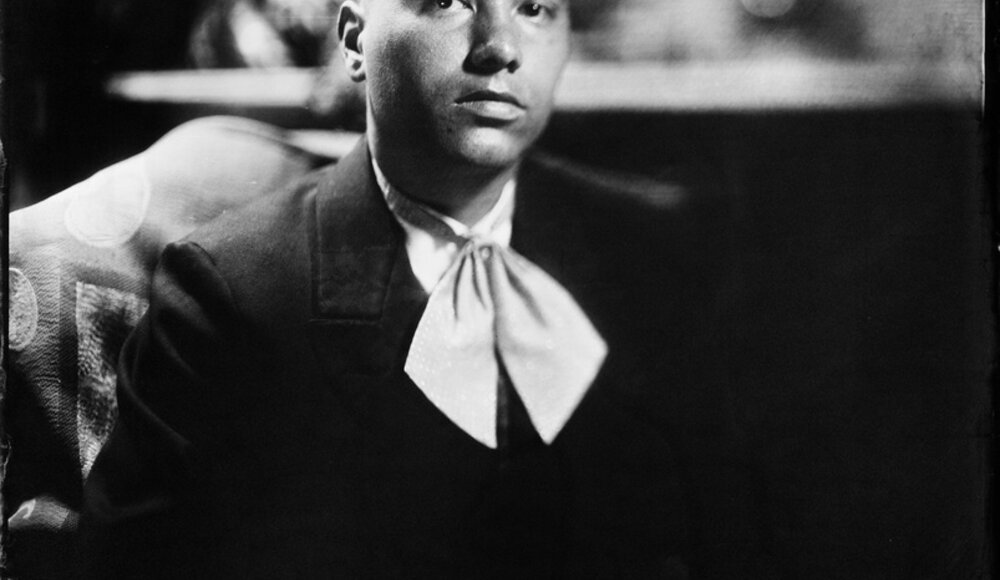





 Olimpia Gaia Martinelli
Olimpia Gaia Martinelli
